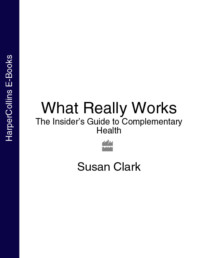
Полная версия
What Really Works: The Insider’s Guide to Complementary Health
Finally, if you suffer recurring respiratory infections, a supplement called Oralmat will help, especially if the transition between climates when travelling causes problems for you. It contains extract of rye grass, which is very effective for a range of breathing complaints, including sneezing, bronchitis and asthma. One patient, who knew her attacks were being triggered by environmental pollutants whenever she travelled by plane, described the remedy, which has been tested by researchers in Melbourne, as ‘miraculous’.
As well as rye, which is said to clean and renew arteries and which is used in Traditional Chinese Medicine to reduce damp, watery conditions in the body, Oralmat also contains energy-giving co-enzyme Q10, which is found in every cell in the body, and an immune-supporting substance called squalene which, in Oralmat, is taken from shark’s liver but which is also present in olive oil.
Dirty Air
The air you breathe in contains about 21% oxygen and 0.04% carbon dioxide. The air you breathe out contains a fifth less oxygen and ten times more of the waste gas, carbon dioxide. If the air you breathe in is dirty, then the inside of your lungs will be dirty too. Pollution, which is now being blamed for the dramatic increase in asthma (in some regions, as many as one in four children now suffers), has also been linked to heart conditions and lung problems. And it is not just a problem of the traffic-clogged inner cities.
In the UK, for example, families who have deliberately left those smog-filled towns to find cleaner air for their young children to breathe were shocked recently to learn that even outside urban areas, air quality has dropped sharply. The environment charity Friends of the Earth has described the findings of increased pollution in rural areas as devastating – especially since, in Britain for example, some of the worst figures recorded and analysed were sadly taken from a popular nature reserve.
In your lifetime, your lungs will filter billions of litres of air. Tiny hairs in the nose are the first line of defence, but microparticles such as benzene and hydrocarbons can slip through, and any form of exercise in a polluted environment will exacerbate the problem. Cycle in the city, for instance, and much of the air you are breathing in (at the rate of 50 litres a minute if you are cycling fast) will actually bypass the nose filters and go straight to the lungs.
The lungs do have their own protective and cleaning mechanisms, but fine particles deep inside are difficult to flush out. Once lodged in the fibres of the lungs, these pollutants have been linked to cancer, bronchitis, emphysema, general breathing difficulties and a range of other health problems. Lung cancer is now the biggest cancer killer in the United Kingdom, and pollutants – mostly tobacco but including air pollutants – are to blame for an estimated 95% of all cases.
There is no real scientific evidence that trendy pollution masks will protect you unless you are exercising vigorously, and you may laugh at those who wear them to hoover the house or jog around the block, but if you are exercising in a polluted environment then anecdotal evidence from users suggests that they can help filter out some of the worst of these particles. (For suppliers of pollution masks, see the Resources chapter.)
Easy Air Pollutants Guide
Benzene/hydrocarbons: Hydrocarbons, including benzene, are emitted by car engines, but are also present in cigarette smoke. They have been linked with cancer.
Carbon monoxide: A potentially lethal gas produced by incomplete combustion, it disables oxygen-carrying red blood cells.
Lead: Effects build up over time and may hit the central nervous system. Some research suggests it can have an adverse effect on children’s IQ.
Nitrogen oxides: Both nitric oxide and nitrogen dioxide are the products of fossil-fuel combustion. Sources range from cars and lorries to power stations. Both are constituents of that horrid inner city petrochemical smog and dissolve in water to make strong acids which corrode tissues. Effects include sore throats and runny noses.
Ozone: We may worry about the holes in the earth’s atmosphere that leave us unprotected from the worst of the sun’s harmful rays, but on the ground ozone itself counts as a pollutant which forms when nitric acid from nitrogen dioxide reacts with hydrocarbons. A reaction encouraged by sunlight, the effects range from a runny nose and sore throat to lung disease.
Sulphur dioxide: A nasty, acidic gas produced when coal or oil is burnt and which is part of the winter smog cocktail. Effects of high levels, particularly in asthmatics, include coughing and a feeling of chest tightening. Bronchitis, emphysema, lung inflammation and blood clotting have also been linked to this pollutant.
Suspended particles: Tiny solids found in diesel and coal smoke. The bigger bits get trapped by the body’s defences, but tiny particles penetrate the lungs. Can be carcinogenic.
PCBs/dioxins: Generated by widespread incineration of solid waste. May be carcinogenic and may also have an effect on the central nervous system.
Конец ознакомительного фрагмента.
Текст предоставлен ООО «ЛитРес».
Прочитайте эту книгу целиком, купив полную легальную версию на ЛитРес.
Безопасно оплатить книгу можно банковской картой Visa, MasterCard, Maestro, со счета мобильного телефона, с платежного терминала, в салоне МТС или Связной, через PayPal, WebMoney, Яндекс.Деньги, QIWI Кошелек, бонусными картами или другим удобным Вам способом.


